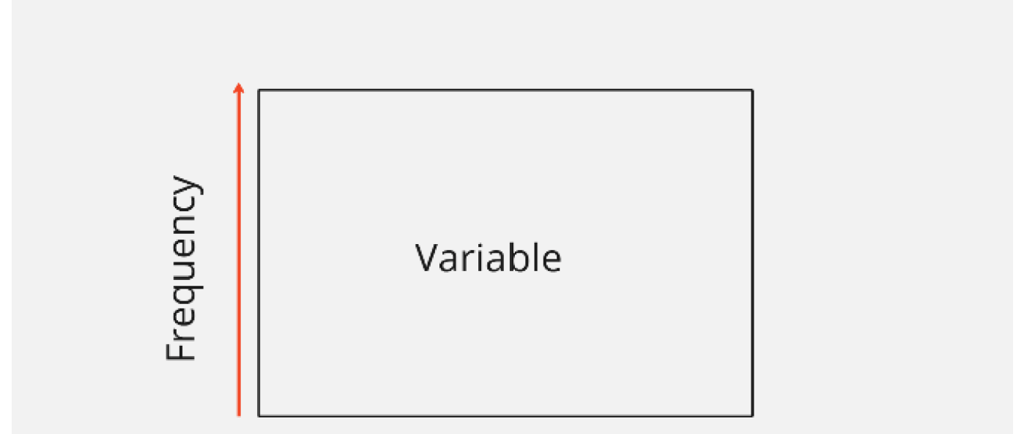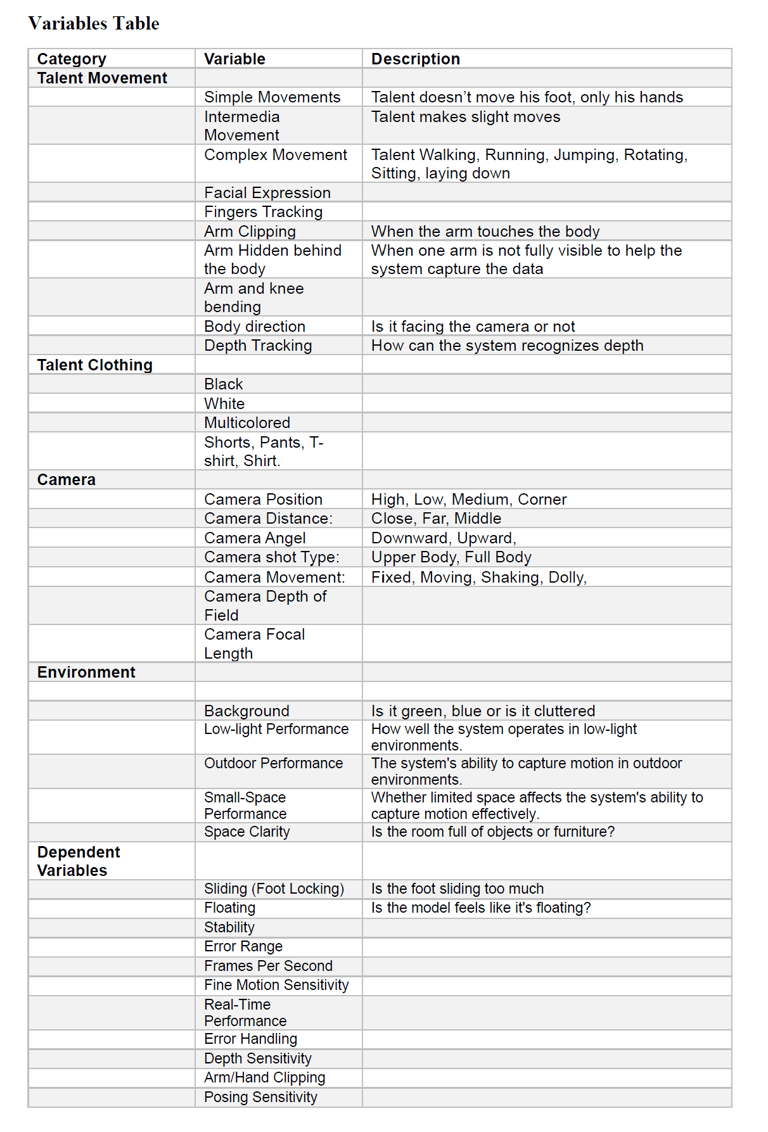Testing AI Motion Capture: Variables, Methods & Expected Outcomes (Part 2)


Testing AI Motion Capture: Variables, Methods & Expected Outcomes (Part 2)
Methodological Framework
This continuation of the technical research on AI-powered motion capture systems outlines the testing framework implemented for comprehensive evaluation. The methodology incorporates a structured approach to variable manipulation and performance assessment.
Variable Classification
The research design incorporates both independent variables (controlled inputs) and dependent variables (measured outputs) to facilitate systematic evaluation.
Independent Variables
1. Talent Movement Variables
Simple Movement Patterns: Isolated hand gestures with stationary lower body positioning
Intermediate Movement Complexity: Moderate body movements with limited spatial displacement
Complex Movement Sequences: Walking, running, jumping, rotational movements
Specialized Tracking Elements: Facial expression capture, finger movement precision
Occlusion Scenarios: Arm-body intersection, partial limb visibility, varied body orientations
2. Talent Clothing Variables
Chromatic Variables: Black, white, and multi-colored apparel
Garment Configuration: Various clothing styles including shorts, pants, t-shirts, and formal shirts
3. Camera Configuration Variables
Positional Placement: High, low, medium, and corner mounting positions
Distance Metrics: Close, intermediate, and distant camera positioning
Angular Orientation: Downward, upward, and neutral angles
Framing Parameters: Upper body isolation versus full-body capture
Stability Factors: Static, mobile, and deliberate instability conditions
4. Environmental Variables
Background Composition: Chroma key surfaces versus visually complex environments
Illumination Conditions: Optimal, moderate, and suboptimal lighting
Spatial Context: Indoor versus outdoor environmental settings
Volumetric Constraints: Spacious versus restricted capture areas
Dependent Variables
The research measures multiple performance indicators including:
Movement Fidelity Metrics: Foot sliding/locking phenomena, gravitational adherence, stability measurements
Technical Performance Parameters: Error range quantification, frame rate consistency
Detail Resolution Capability: Fine motion detection thresholds, spatial depth perception
Operational Functionality: Real-time processing performance, error management protocols
Technical Limitations: Limb intersection handling, pose recognition sensitivity
Methodological Procedure
The research implementation follows a four-phase protocol:
Environmental Configuration: Standardized setup of AI motion capture systems in controlled environments
Systematic Testing: Data acquisition across all variable permutations
Quantitative Assessment: Methodical measurement of dependent variables
Statistical Analysis: Application of analytical tools to identify statistical significance and correlation patterns
Anticipated Research Outcomes
This investigation is expected to yield:
Comprehensive technical profiles of evaluated AI motion capture systems
Identification of performance differentials across varied application scenarios
Quantification of artificial intelligence contributions to motion capture enhancement
Determination of critical variables affecting performance optimization
Research Implications
The findings from this research will provide valuable insights for technical implementation in animation, interactive media development, virtual reality applications, and biomechanical analysis. The research outcomes will facilitate:
Evidence-based system selection aligned with specific technical requirements
Environmental and configurational optimization
Enhanced understanding of technological constraints
Informed capital investment in motion capture infrastructure

